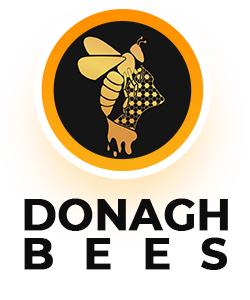Heather Honey Benefits
Health benefits of Irish heather honey comparable to those of Manuka honey
A collaborative research team from Trinity and Dublin City University has found that Irish heather honey is quite literally buzzing with health benefits. The findings showed that there was a similar overall presence of powerful antioxidants called phenolic compounds in Irish heather honey as in Manuka honey. These antioxidant compounds help to prevent damage occurring in the cells of the body and are important for health and well-being. Researchers also found that multi-floral honeys produced by urban bees had a greater level of antioxidant phenolic compounds than their rural counterparts – a finding possibly attributed to the flower diversity and abundance surrounding hives. The findings have just been published in the journal, Food Chemistry. The research was led by PhD student Saorla Kavanagh, School of Chemical Sciences and DCU Water Institute, and supervised by senior academics Dr Blánaid White, School of Chemical Sciences, DCU, and Professor in Botany at Trinity, Jane Stout. Funding was provided by the Irish Research Council and honey samples were donated by beekeepers across Ireland. The research focused on honey produced in Ireland and examined the phenolic content and physicochemical parameters (moisture, total sugar, colour) of different types of Irish honey and compared these with international brands. It was also the first ever comparison between Irish single-origin honeys (heather, ivy and oilseed rape) and multi-floral honeys and, in addition, the researchers compared honey from urban and rural hives. Key Results- 131 Irish honey samples were collected directly from beekeepers between 2013-2015 from 78 locations across Ireland. The majority (124) were multi-floral honeys (55 from urban, 69 from rural locations); three were heather honeys; two were ivy honeys and two were oilseed rape honeys.
- Research focused on honey produced in Ireland and the majority of samples came from small private producers.
- Honeys with a dark colour typically have a higher TPC (Total Phenolic Content) and thus a higher antioxidant capacity.
- Urban multi-floral honeys had a higher TPC than rural multi-floral honeys.
- Irish heather honey had the highest TPC of all Irish single origin honeys and had a higher TPC than Manuka honey.
- Honey colour correlates with electrical conductivity and with TPC, although ivy honey was an exception to this.
- Ivy honey was the darkest Irish honey analysed and its TPC was less than that of heather and Manuka honeys.
- Honeys were classified according to landscape context or honey floral source.
- The differences in the total phenolic content in the study could be linked to landscape context, specifically the principal land use surrounding sampled hives. There was significantly less TPC in rural vs urban areas.
- Difference in the TPC of honey types depended on their floral origin. For Irish single origin honey, heather honey had the highest mean TPC.
Contact information
Support Monday - Friday: 9:00 am - 6:00 pm (GMT+1)
Phone: +353 83 031 4818 (WhatsApp)
Email: donaghbees@gmail.com
Address: 46 Cedar Grove, Churchland Quarters(Carrowtemple Moneyshandoney And Carrick), Carndonagh, Co. Donegal, F93 D7PK, Ireland
